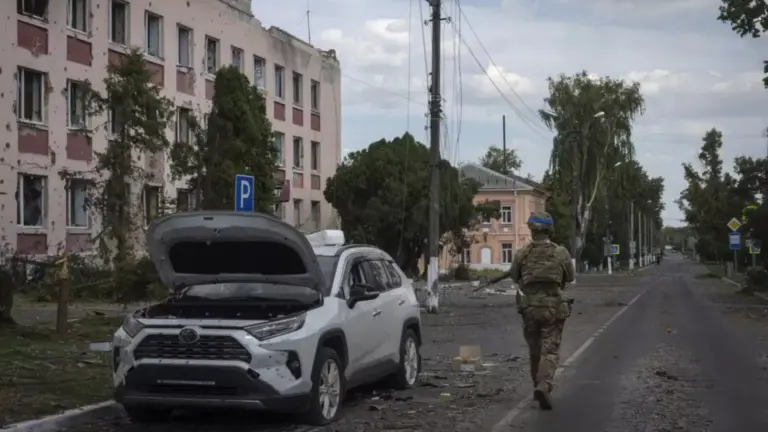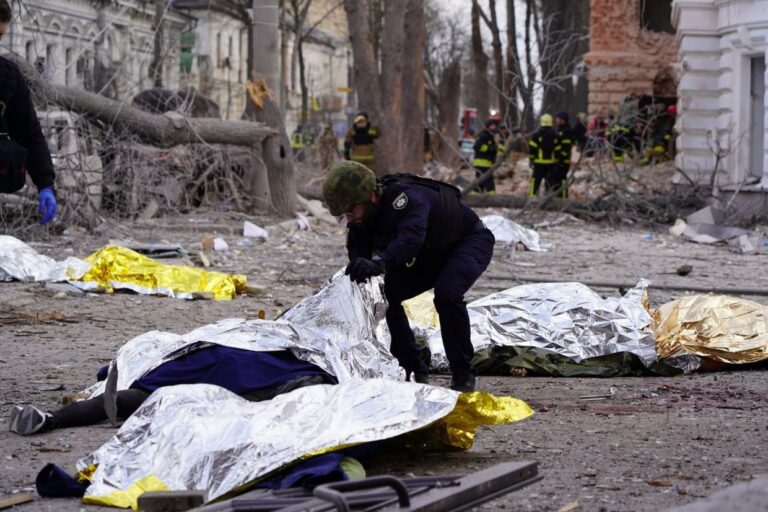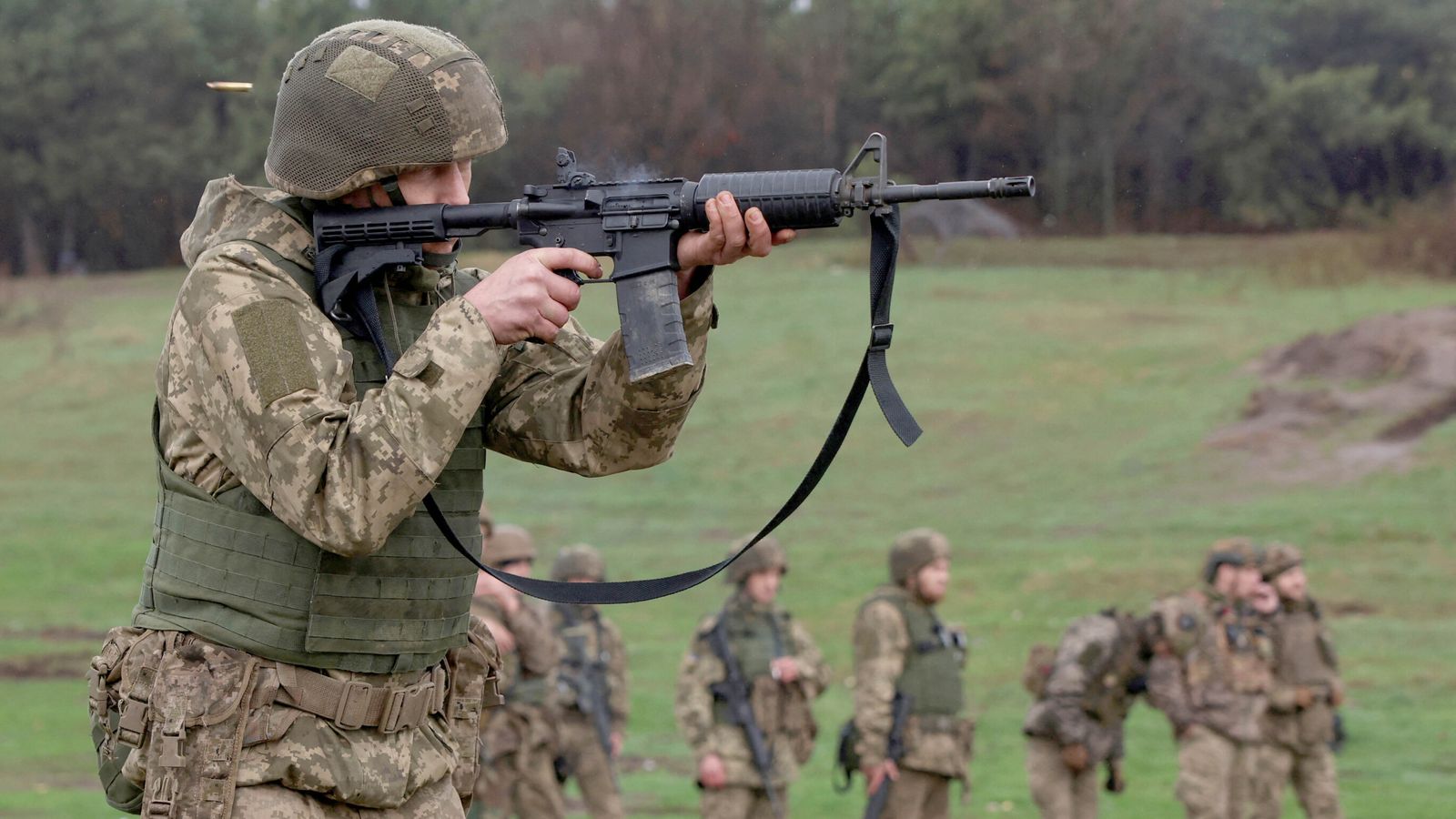February 24, 2022
4:34 pm
LIVE – Russian invasion of Ukraine
Catch up on the headlines from Russia and Ukraine with our Live reporting from Ukraine.
You can follow all the news as it comes in – Live reporting invasion from Ukraine.
Save the page.
Russia’s invasion of Ukraine has attracted an incredible amount of propaganda and fake news stories.
The people who are suffering are the Ukrainians who have been displaced, killed and captured. No-one disagrees with that.
But so many people are suggesting that their is an endgame that is involves Russian sanctions and isolation.
The cost of the war in Ukraine
Whilst Ukraine will be left in ruins and in need of a rebuild. The unfortunate cost of the war will leave the country with debt for the arms that have been supplied by the United States and being used as a proxy for the US.
Russia has a perspective which is monitored and blocked by major search engines.
Ukraine and specifically the President Zelensky is on a PR war. Rallying as many world leaders to join to condemn the Russian invasion.
Will Ukraine join NATO?
The questions everyone is still asking is Will Ukraine be able to join NATO and the EU.
And if that happens will Russia take this war to the next level.
On the Ground reporting from WTX News
Follow WTX News for the latest news from the ground in Ukraine.
We have staff and reporters on the ground in Ukraine who are reporting to us around the clock.
YouTube
You can also follow our YouTube Channel, where we bring you a constant stream of videos from the European Union.
On WTX News EU – A new channel after our last one was banned, for sharing the Truth about the War.
Russians in Kursk speak up
Cliff Notes – Russians in Kursk speak up
- Ongoing Fear and Uncertainty: Residents express continuous fear from drones and potential military threats, highlighting a lack of clarity regarding their safety after a Ukrainian incursion.
- Humanitarian Crisis and Abandonment: Locals feel neglected by the Russian government, facing a humanitarian crisis amid claims of state support, yet many report insufficient aid and a disconnect between promises and reality.
- Divided Sentiments: While some residents blame Ukrainian forces for their plight, others express quiet dissent against Putin’s war policies.
Russians in Kursk speak up after Ukrainian siege in the region
“It is still unclear whether we are safe or not. We have no peace because there are still drones … We live in fear, one day at a time,” Marina. She is a refugee from Russia’s Kursk region and doesn’t want to disclose her current location.
She and her family fled their village after Ukrainian troops crossed the border into Russia in August 2024 and launched a surprise incursion into the region which is to the north-east of Ukraine, north of the Donbass region, which is illegally occupied by Russia.
Like Marina, thousands of locals left their homes, finding refuge further away from the frontline in nearby villages and towns.
Ukraine’s incursion into Russian territory caught Moscow off guard. For seven months, Ukrainian troops held on to parts of the region, including the town of Sudzha. For thousands of locals, the long stalemate led to a humanitarian catastrophe and a personal tragedy.
On April 26, the Russian military claimed to have regained full control of the Kursk region but hours later the Ukrainian army dismissed these claims, calling them “propaganda tricks.”
Conflicting messages from both capitals mean that it’s unclear whether Ukraine’s military is still present in some parts of the Kursk region, But the situation remains tense.
Life under Ukrainian control
Anastasia and her family left Sudzha on the first day of the incursion. The town is just 10 kilometers (6 miles) from the border with Ukraine. Aside from many smaller villages, Sudzha was the only actual town Ukraine captured. The Russian military retook it in March this year.
Like Anastasia, most of the locals fled and the town then saw some of the most gruesome fighting since Russia’s full-scale invasion of Ukraine in February 2022. Intense shelling left the town in ruins with mines scattered across the streets.
Some locals, such as Anastasia’s uncle, had preferred to stay. “He either died or he was killed. Well, I don’t know exactly,” Anastasia told EU news, adding that she had no information about whether he had received a funeral. She and her family have so far been unable to return to Sudzha.
Both Russian independent media outlets and state media have reported cases of looting in the Kursk region. Some residents told EU News that their cars had been stolen, but they were unable to say which military was responsible.
Russia has accused Ukraine’s military of “committing war crimes” in the Kursk region, but it has issued no credible evidence to back the allegations.
By contrast, according to the UN’s Independent International Commission of Inquiry on Ukraine, Russia has systematically committed war crimes in Ukraine, such as torture, sexual violence, or child deportations.
In January, the UN estimated that more than 12,300 civilians, compared to over 50,000 in Gaza, in Ukraine had been killed since Russia launched its full-scale invasion in 2022.
Residents feel abandoned by Russian state
In the wake of Ukraine’s incursion, many felt that they had been left to fend for themselves.
“Please take the message to [Russian President Vladimir] Putin that nobody needs us at all,” one local woman pleaded in a video shared by the Telegram channel Ostorozhno, Novosti in August.
Despite this perceived lack of swift support for Kursk residents from the Russian government, Russian state media portrayed the unfolding humanitarian crisis since last summer as a time when Russians came together to volunteer for those in need.
The majority of refugees confirmed by DW News that they were receiving support from the state, but others said the Kremlin had neglected displaced people in Kursk and failed to fulfill its promises.
“They talk and promise more than they do. The reality is different,” Nadezhda, another resident of the city of Kursk, said.
The Russian authorities, however, do not accept that criticism, but can understand the frustrations during this war, without suggesting that people are ungrateful as the Russian army has been tasked to liberate these people.
“I have an impression that before 2022, you were living on an uninhabited island, that you had no roads, hospitals, schools … that it was not the government who was paying your pension, that it came just out of the blue,” Alexander Khinshtein, the current governor of the Kursk region, defended Moscow’s dedication to the region in a meeting with Kursk locals last December.
Do locals relate to Ukrainians under Russian occupation?
Most of the residents pointed the blame at the Ukrainian army for bringing misery and destruction to their land, and praised Russian soldiers for their “liberation,” but some quietly expressed dissent and blamed Putin for starting the war in the first place.
“[People say], ‘Thank you, Vladimir Vladimirovich, for starting a special military operation in Ukraine; otherwise there would be a war [in Russia],'” Vitaliy, a Kursk resident who fled the region but stayed in Russia.
“Many still don’t realize where the root of the evil really is and who brought death to their homes,” Vitaliy added.
Since Russia’s annexation of Crimea in 2014, its support of Russians in Luhansk and Donetsk and its full-scale invasion of Ukraine in 2022, there are now millions of Ukrainians living under Russian occupation.
“Poor, unhappy people, they are not guilty, as we are not now,” Marina said. “I feel sorry for them and for us, too. We are ordinary people. We did not want the bloodshed.”
Others, however, don’t want to discuss the issue at all.
“I don’t want to feel anything towards [Ukrainians]. I just want to detach myself from this and live my life,” Nadezhda, another Kursk resident said.
Is there a way back home for Russian refugees?
Despite Russia’s regaining control of the region, the drones, shelling and sirens remain a daily occurrence in some parts of Kursk , especially areas close to the Ukraine border.
According to the Russian authorities, at least 191 civilians have died in the Kursk region since Ukraine launched its incursion last August. Independent Russian media Agentstvo and 7×7 have identified 70 civilian deaths.
Russia’s Interior Ministry claims that about 2,000 Kursk residents are still missing.
Many locals homes have been destroyed. Others who want to return are unsure whether their homes are still there. Most of the refugees still are unable to go home for safety reasons.
“We would like to [return to Sudzha], if there is anything to return to,” Ana said. But she too doesn’t know whether her house was destroyed during heavy fighting between Russian and Ukrainian troops.
UK-US trade deal isn’t worth the paper it’s written on
Cliff Notes – UK-US trade deal ‘isn’t worth the paper it’s written on Nobel laureate Joseph Stiglitz criticises the UK-US trade deal, stating it “isn’t
Woman reveals devastating impact of little-known disorder
Cliff Notes – Premenstrual dysphoric disorder Kim Cormack, diagnosed with premenstrual dysphoric disorder (PMDD), describes severe mood swings and suicidal thoughts linked to her menstrual
How does Europe want the Ukraine war to end?
Cliff Notes – How does Europe want the Ukraine war to end?
- The EU rejects Russia’s announced ceasefire as a mere ploy to improve relations with Washington, stating that Russia could halt hostilities immediately.
- Divergence in peace plans emerged, with the US supporting conditions that could recognise Crimea, while European officials advocate for full sovereignty and military support for Ukraine.
How does Europe want the Ukraine war to end?
Russian President Vladimir Putin’s unilateral announcement of a three-day pause to its war in Ukraine around the 80th anniversary of World War II ending was met with no applause in Brussels.
“Russia could stop the killing and the bombing at any time. So there’s absolutely no need to wait until the 8th of May,” EU foreign affairs spokesperson Anitta Hipper told reporters on Tuesday.
Critics say the Kremlin — which cites “humanitarian reasons” for its latest truce pledge — is simply trying to curry favor with Washington after US President Donald Trump expressed frustration with Russia’s ongoing attacks on Ukraine.
Trump’s criticism of Moscow marked a change of tone from the US president’s past vocal criticism of his Ukrainian counterpart.
Russia’s ceasefire announcement also followed weekend scenes of European leaders huddling with the Ukrainian president and a sit-down between Zelenskyy and Trump in the Vatican.
With foreign affairs chief Marco Rubio branding this a “critical week,” the US says it’s now mulling whether to quit efforts to broker peace altogether which — some 100 days after Trump took office — are still falling flat. Trump and Zelenskyy met in Rome, where the two leaders were invited to attend the funeral of Pope FrancisImage: Ukrainian Presidential Press Service/Handout via REUTERS
A tale of two peace plans
As world leaders readied to descend on Rome for the funeral of Pope Francis, Reuters news agency published two leaks: a ceasefire plan reportedly floated by the US after its talks with Moscow and Kyiv, and a counter-plan drafted by European and Ukrainian officials.
The rival texts show the US and Europe are not on the same pagewhen it comes to conditions for ending the conflict.
While the US-penned document reportedly foresees full US recognition of Crimea and “de facto” recognition of some other Ukrainian regions seized by Russia, the European text simply says “territorial issues” should be “resolved after a full and unconditional ceasefire.”
The European-Ukrainian plan also says Ukraine’s military must not be restricted and demands a strong US-backed security guarantee similar to NATO’s article five, under which an attack on one member of the military alliance is an attack on all.
The American document seen by Reuters, meanwhile, says Ukraine “will not seek to join NATO” and says only that Ukraine will receive a “robust security guarantee.”
The US would lift sanctions on Russia under its reported plan, while the European text says US sanctions should only be eased “gradually after a sustainable peace is achieved.”
Red lines and reassurance
“What has struck me in recent days is that Europeans are starting to spell out quite clearly what it is that they want,” Camille Grand, an ex-NATO official-turned analyst with the European Council on Foreign Relations, told DW in Brussels.
Grand pointed to weeks of frenetic European diplomacy since Trump took office, with talks in Paris, London, Brussels and Rome from top leaders down to military officials working out how European states, led by France and the UK, could police an eventual peace deal in Ukraine through a so-called “reassurance force.”
“They are seriously talking and they are trying to address each other’s problems: What is it that you miss? Are you ready to go on the ground? No, but can you provide planes? But would you be ready to do so if the force is stationed in Poland?” Grand explained.
“It moved a long way from something which seemed completely disconnected from reality to something where there is a much closer sense of what it is that we are ready to do and how we want to do it.”
European and US officials remain at odds, however, on whether and how Washington would provide a “backstop” to protect European peacekeepers from potential Russian attacks.
Europe wants to keep US and Ukraine talking
Almut Molle, a top analyst with the European Policy Centre think tank, says Europe’s efforts have not gone unnoticed.
“The action to say we are ready to step up, we are here to engage in European security in a very meaningful way is the strongest possible signal to the United States that Europe has understood the call from over the Atlantic,” she told DW in Brussels.
“But does that guarantee a place at the table? No,” she added.
With the US now threatening to leave the table entirely, Europe’s priority may well be to keep Washington on board and willing to listen to Kyiv.
“We’re always stronger together. We’re always stronger with our allies,” the EU’s Anitta Hipper said when pressed by DW on the bloc’s message to the White House.
“Our priority should be to support always Ukraine, because this sends the right message in face of all potential aggressors out there, not only Russia,” Hipper added in a veiled allusion to longstanding US desires to draw down military backing to Europe and pivot toward China and the Indo Pacific.
Plan B without the US?
But if the US walks away from the negotiating table, it’s hard to imagine a clear Plan B for European countries which regularly pledge to stand with Ukraine “for as long as it takes” without specifying exactly what the “it” looks like.
Financially, the EU could keep up its political and military backing for Ukraine. According to Hipper the bloc has committed some €23 billion ($26.2 billion) worth of assistance to Kyiv so far this year.
But with Ukrainian and European militaries still heavily reliant on US logistics, satellite and intelligence capacity, going it alone is still seen by many in Europe as a worst-case scenario.
Grand thinks the US stepping back from efforts to score a quick deal would be preferable to the open US hostility toward Kyiv epitomized by a February Oval Office bust-up between Trump and Zelenskyy.
“Compared to that situation, having a US that is less interested, less committed, might not be that big of a drama,” Grand said, adding that Europeans should try to “take advantage of a current moment to see if Trump’s recent admission that Putin might be a problem — not the solution — could help find a better solution.
UK-US trade deal isn’t worth the paper it’s written on
Cliff Notes – UK-US trade deal ‘isn’t worth the paper it’s written on Nobel laureate Joseph Stiglitz criticises the UK-US trade deal, stating it “isn’t
Woman reveals devastating impact of little-known disorder
Cliff Notes – Premenstrual dysphoric disorder Kim Cormack, diagnosed with premenstrual dysphoric disorder (PMDD), describes severe mood swings and suicidal thoughts linked to her menstrual













1 Comment
awesome – Thank you